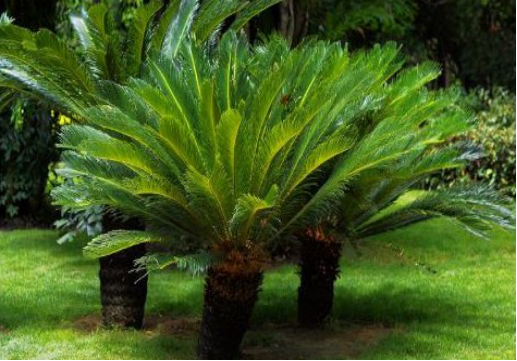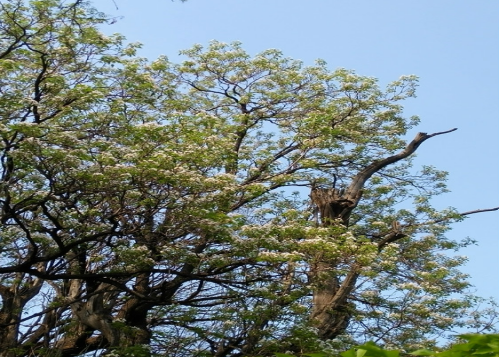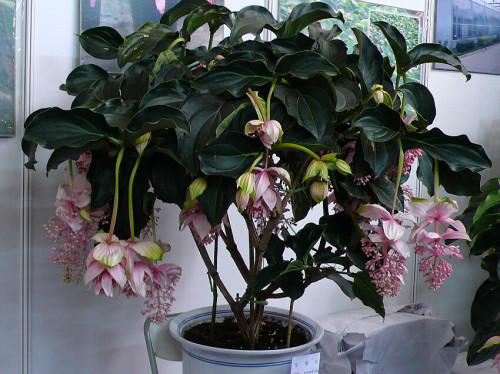Culture elements of cycad:
1. Keep plenty of sunshine
Cycads like light, but should not be placed in direct sunlight, especially in summer when the sun is very strong, cycads should be given proper shade.
two。 Suitable temperature
Cycads do not like cold weather, so when the winter temperature is low, it should be moved to the house to prevent frost damage, but let it bask in the sun when the sun is better at noon.
3. Selection of basin soil
Every two years, cycads should be changed basin soil, pay attention to fertilization, basin soil requirements are: loose, breathable, slightly acidic. If the cycad has obviously grown up, it should be replaced together with the basin, and be careful not to hurt the rhizome during the replacement.
4. Proper watering
In summer, water once every night, every 3-5 days in spring and autumn, and 5-10 days in winter.
5. Timely pruning
Cut off the yellowed leaves in time so as not to affect the growth of the new leaves. As long as the roots survive, there will be no problem with cutting off the leaves of cycads, but they are ugly for the time being.

As long as you do a good job of the above five breeding elements, your cycad will be full of vitality, and maybe one day it will blossom and bring good luck. At that time, it will be able to breed and add a touch of green to the home.
How does cycad reproduce? The editor will introduce one or two to you.
The method of reproduction of cycad:
There are about two ways of reproduction: sexual reproduction, that is, seed reproduction, asexual reproduction, that is, separate rhizosphere sprouting for reproduction.
As for the specific breeding methods, please refer to the introduction of cycads breeding methods on this site.
If you want to make the cycads grow well, it is no problem to refer to the above 5 breeding elements!
What are the bonsai plants and how to raise them?
[FAQ] what are the bonsai plants and how to raise them?
[expert answers]
Q1: what are the bonsai plants?
The common plants of bonsai mainly have the characteristics of slow growth, small leaves, dense branches and easy to survive under adverse conditions. Traditional plants such as elm, grapefruit, yellow poplar, five-needle pine, yew, bottle orchid, pomegranate, plum blossom, Euonymus and maple can be used as bonsai plants.
The more hardy woody species of indoor bonsai are mainly bonsai with deciduous plants as the theme.
Deciduous plants are generally temperate climate type, of course, there are green thick and simple pine and cypress bonsai, more hardy, and dormant in winter, easy to manage, but deciduous bonsai in winter is characterized by tree type, rather than vibrant green, during the Spring Festival is not very satisfactory. Normally, With Ginkgo biloba, Acer truncatum, Acer truncatum, Hippophae rhamnoides, Pinus elliottii, Cypress juniper, Malus chinensis, Metasequoia, Taxus mairei, Plum Blossom, Wintersweet, Yingchun, Bauhinia, Tripterygium, Begonia, Xifu Begonia, Ziwei, Chinese wolfberry, Chinese wolfberry, pumpkin, pomegranate, June snow, papaya, Jiuli incense, cinnabar root, golden Finch, magnolia, Hu decadent, Hawthorn, apple, pear, peach, bergamot, camellia, silk cotton, Daphne, sweet-scented osmanthus, mahogany, rhododendron, golden billiard, cycad, banyan, small tiller, yellow poplar, white wax, Fujian tea, red maple, ten meritorious efforts, yellow, honeysuckle, ivy, grape, chicken blood vine, Schisandra, Luoshi, Fufang vine, Nanshe vine, Buddha belly bamboo, Phoenix tail bamboo, purple bamboo, brown bamboo, asparagus, umbrella bamboo, Zhu banana, hanging orchid, aloe, chrysanthemum, chrysanthemum Along the steps of grass, Saxifraga and so on.
The varieties that lazy people like are: pine and cypress, begonia, camellia, cycad, banyan, small tiller, yellow poplar, white wax, Fujian tea, June snow, luoshi, bamboo, step grass, etc., you can also choose a combination of cactus plants, which not only saves time and effort, but also saves water.
Many people like to put some plant bonsai in the house, which is not only beautifying the environment, but also good for the indoor air. However, how should the indoor bonsai be maintained to make the bonsai look better and survive for a long time?
Q2: how to raise bonsai plants?
Watering: watering is one of the most important and frequent measures in the management of tree stump bonsai. The stump is planted in the basin, whether it is a deep basin or a shallow basin, the soil is always limited, and the water content is also limited. if the stump is not watered for a long time, the stump will wither due to lack of water, so it is necessary to observe in time and water according to the dry and wet condition of the soil to maintain soil moisture. Of course, overwatering can not be excessive, if overwatering, the basin soil is too wet for a long time, it is easy to cause root hypoxia and decay; at the same time, the amount of watering depends on specific tree species, seasonal changes, and warm and cold weather.
Fertilization: the soil in the pot of the tree stump bonsai is limited, so the nutrients are also limited, so attention should be paid to the supplement of fertilizer. Because of its artistic characteristics, tree stump bonsai should not be fertilized too much or too frequently. It is necessary to master the content and types of fertilization and grasp the fertilization season. The three elements of plant growth nutrients are nitrogen, phosphorus and potassium fertilizer, nitrogen fertilizer can promote the growth of branches and leaves, phosphorus fertilizer can promote the formation of flowers and fruits, and potassium fertilizer can promote the growth of stem and root. therefore, the selection of fertilizer should be determined according to the type of tree stump and its growth trend.
Diseases and insect pests: bonsai, whether it is branches, leaves or roots, may be affected by diseases and insect pests, so attention should be paid to prevention and control.
Change the pot: the potted flowers installed in the room affect the plant growth because of insufficient sunlight, insufficient humidity, small air flow and too much dust. Especially some precious flowers, such as yellow leaves, withered branches or rotten roots, are not easy to grow well. Therefore, the position should be changed frequently indoors, preferably once every 5-7 days. When changing the position of potted flowers in winter, we should pay attention to the cold, generally at noon on a sunny day, and do not make the potted flowers suffer frost injury.
Note: potted flowers that like drying indoors should be placed in a well-ventilated place. When there is plenty of sunshine at noon in winter, windows should be opened properly to make the air circulate. Open less or not in the snow. Indoor sanitation at the same time, to often spray water to the leaves, remove the dust on the leaves, in order to facilitate the respiration of plants. Residual flowers and withered branches should also be cut off in time.
[editor's comments] there are many kinds of bonsai plants, different varieties of bonsai conservation needs to pay attention to is actually different, here the first agricultural economic editor introduced is a general version, just let everyone have a little understanding, specific but also depends on the varieties of flower friends to analyze, different varieties need to be treated with different maintenance methods, this article is introduced for you here, thank you for your attention to our website!
- Prev

Prevention and Control of Diseases and insect pests of Catalpa
Anthracnose disease control catalpa tree infected with anthracnose, its leaves and shoots will be very harmful, especially in the case of high temperature, high humidity and poor ventilation, the disease is easy to occur, if infected, catalpa leaves will fall off after wilting. Therefore, in view of anthrax, keep the environment ventilated and transparent during protection, and maintain a good supply of water and fertilizer.
- Next

I. the culture method of Baolian lantern flower
Temperature Baolian Lantern likes the bad environment of high temperature and humidity and is not cold-resistant, summer is the best season for its growth, but it should also be careful not to expose it to the sun, and keep it warm in winter, keeping the breeding temperature no less than 16 ℃. The requirement of soil lotus lantern flower on soil is relatively high.
Related
- Fuxing push coffee new agricultural production and marketing class: lack of small-scale processing plants
- Jujube rice field leisure farm deep ploughing Yilan for five years to create a space for organic food and play
- Nongyu Farm-A trial of organic papaya for brave women with advanced technology
- Four points for attention in the prevention and control of diseases and insect pests of edible fungi
- How to add nutrient solution to Edible Fungi
- Is there any good way to control edible fungus mites?
- Open Inoculation Technology of Edible Fungi
- Is there any clever way to use fertilizer for edible fungus in winter?
- What agents are used to kill the pathogens of edible fungi in the mushroom shed?
- Rapid drying of Edible Fungi

